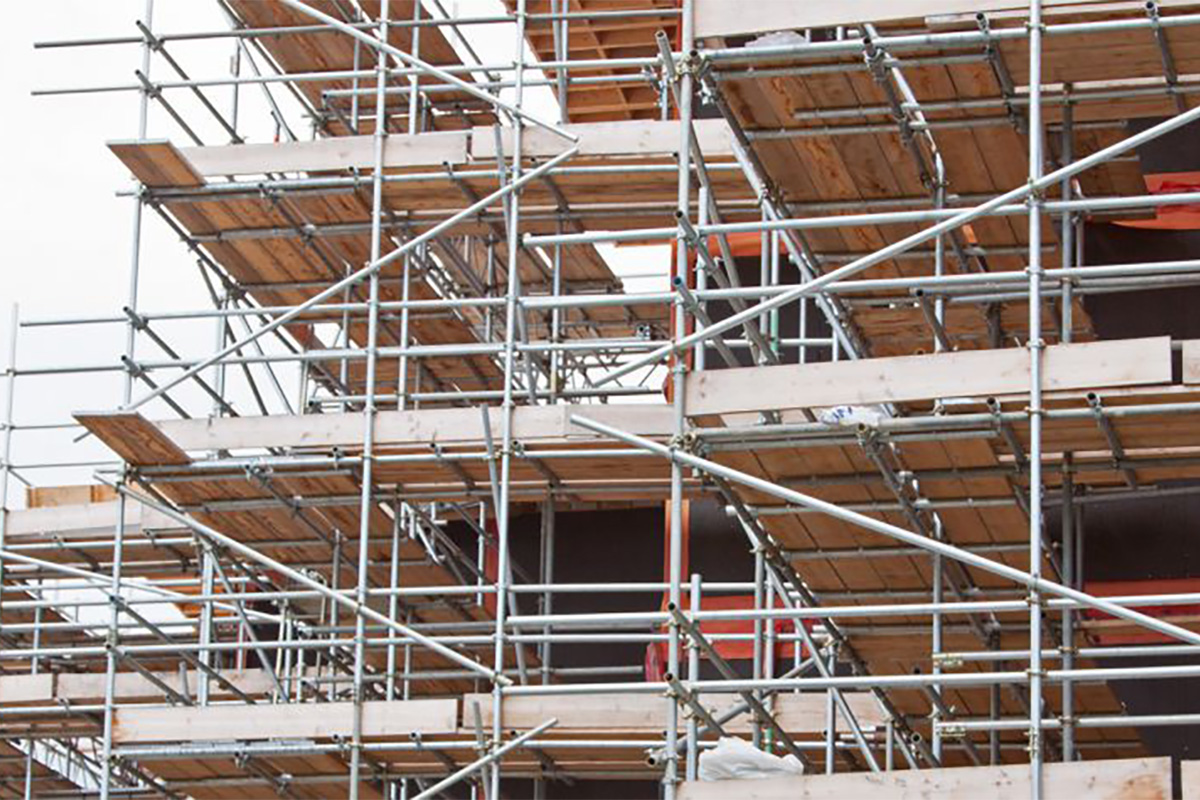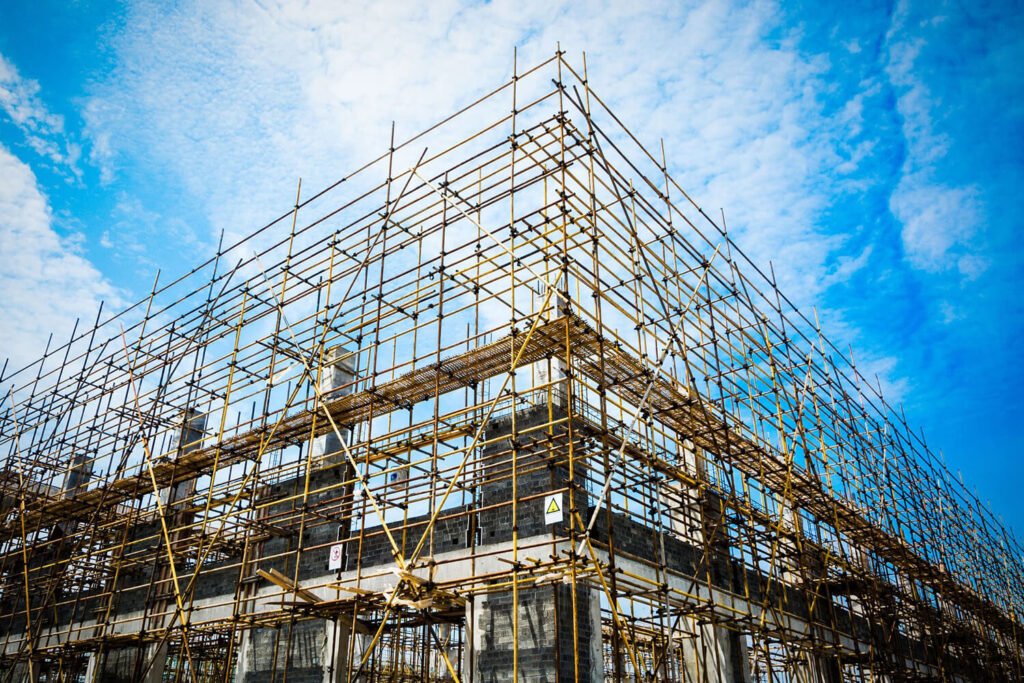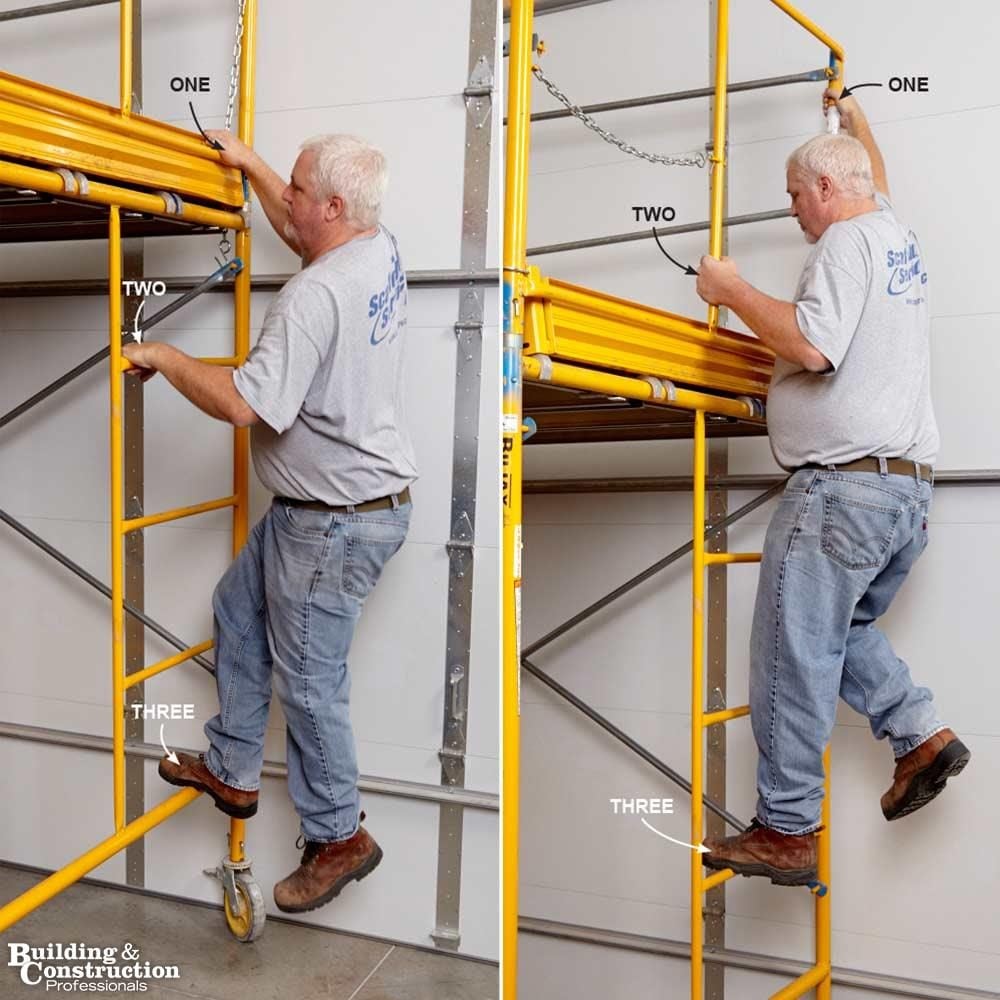Checking Out the Various Kinds of Scaffolding Made Use Of in Building And Construction Tasks
The building market relies heavily on various kinds of scaffolding to meet details task requirements, each offering unique benefits and applications. Typical structure scaffolding supplies a durable foundation for general tasks, while put on hold scaffolding is important for work on skyscraper frameworks.

Standard Frame Scaffolding
Traditional frame scaffolding is among one of the most commonly utilized techniques in the building market because of its toughness and convenience. This system consists of straight and upright frames that are put together to create a stable platform for products and workers. The primary elements include vertical blog posts, straight journals, and diagonal braces, which with each other give a strong framework that can sustain considerable loads.
Among the vital advantages of traditional framework scaffolding is its adaptability to different construction tasks, ranging from property structures to big business structures. The modular design enables easy setting up and disassembly, making it efficient for both long-lasting and temporary projects. Additionally, the system can be personalized in elevation and width, fitting various building styles and website conditions.
Safety and security is critical in scaffolding applications, and typical frame systems are equipped with guardrails and toe boards to stop falls and make certain worker defense. Moreover, normal evaluations and adherence to security laws are essential in keeping the honesty of the scaffold. On the whole, traditional frame scaffolding stays a basic selection in the construction sector, providing a trustworthy system for labor and improving general task effectiveness

Suspended Scaffolding
Suspended scaffolding provides a special option for building jobs that require accessibility to raised surface areas, especially in circumstances where traditional frame scaffolding might be impractical. This kind of scaffolding is commonly put on hold from the roof or top degrees of a framework, utilizing a system of ropes, systems, and pulley-blocks to develop a working area that can be adapted to numerous elevations.
Among the main benefits of suspended scaffolding is its adaptability. It can be quickly rearranged or lowered to fit modifications in construction requirements, making it perfect for tasks such as home window installation, façade job, and upkeep on high-rise buildings. Furthermore, the minimal impact of suspended scaffolding enables far better use ground room in urban atmospheres, where room is usually restricted.
Safety is a crucial factor to consider in making use of suspended scaffolding. Correct rigging and anchoring systems need to be used to guarantee stability and prevent mishaps. Operators has to also be learnt the secure usage of this equipment. In general, suspended scaffolding gives a efficient and efficient option for accessing hard-to-reach locations in numerous construction scenarios, boosting both productivity and security on website.
System Scaffolding
System scaffolding, frequently considered a contemporary service in the scaffolding sector, includes pre-engineered parts that can be promptly constructed and adapted for different building projects. Scaffolding. This kind of scaffolding is characterized by its modular style, which enables flexibility and efficiency on job sites, accommodating structural requirements and various heights
Commonly made from high-strength steel or light weight aluminum, system scaffolding offers improved sturdiness and stability. The components consist of vertical articles, horizontal ledgers, and angled braces, which adjoin securely, ensuring a durable structure. The layout usually integrates standardized installations, simplifying setting up and disassembly processes, therefore decreasing labor time and costs.

Rolling Scaffolding
Moving scaffolding is a flexible alternative to typical fixed scaffolding, developed for movement and ease of use on building sites. This type of scaffolding consists of a system supported by frames with wheels, allowing workers to conveniently move it as required. The flexibility function considerably boosts efficiency, as power scaffold service it lessens downtime connected with disassembling and constructing fixed scaffolding.
Generally created from light-weight products such as aluminum or steel, rolling scaffolding supplies a durable yet portable solution for tasks needing frequent repositioning - Scaffolding. It is especially beneficial in tasks such as paint, drywall installation, and electrical job, where accessibility to different heights and places is needed
Security is critical in rolling scaffolding style, with functions such as securing wheels to avoid unintentional movement when being used, and guardrails to protect employees from drops. Additionally, lots of versions are flexible in height, suiting numerous project needs.
Cantilever Scaffolding

The layout of cantilever scaffolding generally includes using brackets or arms anchored to a building or framework, allowing the system to expand outward securely. Safety and security is paramount; thus, these scaffolds must be engineered to endure environmental conditions and various loads. Normal evaluation and upkeep are necessary to make sure structural integrity and employee safety and security.
Cantilever scaffolding is preferred for its adaptability and effective use room, making it a prominent choice in city atmospheres where space constraints are usual. Additionally, it helps with easier access to high altitudes, eventually adding to the general effectiveness of building projects. Similar to all scaffolding kinds, appropriate training and adherence to safety and security standards are vital for workers using cantilever scaffolding.
Conclusion
To conclude, the diverse kinds of scaffolding utilized in building tasks each serve unique purposes tailored to particular website needs. Standard structure scaffolding offers security, while suspended scaffolding uses versatility for raised jobs. System scaffolding facilitates quick setting up, and rolling scaffolding boosts mobility for differing workplace. Cantilever scaffolding efficiently attends to obstacles in metropolitan setups. Understanding these scaffolding types is necessary for enhancing safety and security and productivity in construction, eventually adding to the successful completion of tasks.
Standard frame scaffolding supplies a strong structure for general tasks, while suspended scaffolding is essential for job on skyscraper frameworks.Moving scaffolding is a functional choice to typical set scaffolding, created for flexibility and ease of use on building and construction websites. As with all scaffolding types, proper Recommended Site training and adherence to safety and security requirements are critical for employees making use of cantilever scaffolding.
Traditional structure scaffolding gives security, while put on hold scaffolding supplies convenience for raised tasks. System scaffolding helps with fast setting up, and rolling scaffolding improves movement for differing work settings.